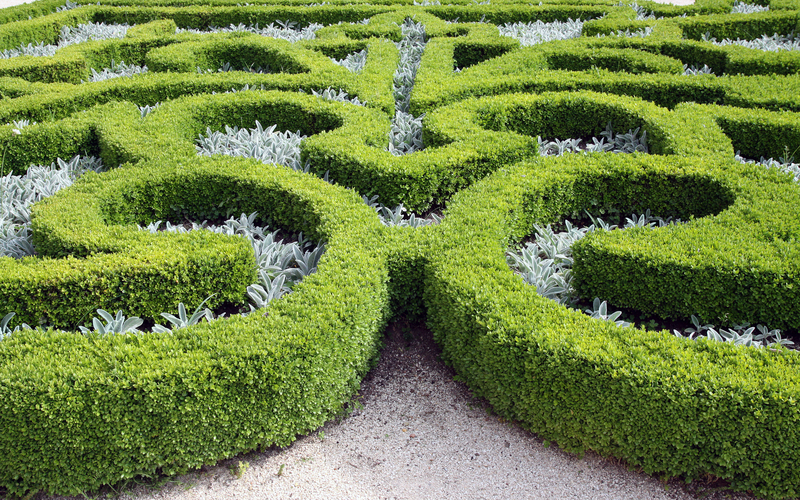English Cottage Gardens: Timeless Charm
Posted on 03/04/2025
English cottage gardens have long been admired for their enchanting beauty and timeless charm. These picturesque landscapes packed with vibrant flowers, meandering pathways, and quaint architectural details exude a sense of warmth and nostalgia. In this article, we will explore the history, key elements, benefits, and potential drawbacks of creating an English cottage garden, along with some practical tips for curating your own charming oasis.
History of English Cottage Gardens
The origins of the English cottage garden date back to medieval times when peasants cultivated small garden plots outside their cottages to grow herbs, vegetables, and flowers. These gardens served a practical purpose and were often an essential source of food and medicinal plants. Over time, the aesthetics of these humble plots evolved, incorporating more ornamental elements along with the functional ones.
By the 19th century, cottage gardens became a prominent feature in British horticulture, celebrated for their informal and naturalistic style. Garden designers like Gertrude Jekyll played a significant role in popularizing the cottage garden aesthetic, blending traditional craft with artistic flair.

Key Elements of an English Cottage Garden
Abundant Planting
A hallmark of an English cottage garden is its exuberant, densely packed planting. Flowers, herbs, and shrubs grow in seemingly haphazard profusion, creating a layered and immersive garden experience. Key plants often include roses, foxgloves, lavender, and delphiniums.
Winding Paths
Curving pathways made from materials like brick, gravel, or stone add to the casual charm of a cottage garden. These meandering paths invite leisurely strolls and provide access to different garden areas without rigid boundaries.
Rustic Structures
Elements like arbors, pergolas, and trellises are common in cottage gardens, often adorned with climbing plants such as clematis or honeysuckle. Rustic wooden fences, gates, and garden furniture further enhance the quaint, pastoral feel.
Cottage Flowers
An array of cottage-style flowers adds to the charm and color of the garden. These can include traditional favorites like hollyhocks, sweet peas, and daisies as well as other perennials and biennials that thrive in the climate.
Pros and Cons of An English Cottage Garden
Pros
- Visual Appeal: The lush and vibrant look of a cottage garden can be incredibly appealing and provide an eye-catching focal point for your property.
- Low Maintenance: While a cottage garden may seem wild and untamed, many prefer it because it generally requires less strict maintenance compared to formal gardens.
- Biodiversity: The diversity of plants can attract a range of beneficial insects, birds, and other wildlife, enhancing the ecological value of your garden.
Cons
- Space Requirements: Cottage gardens can look untidy in small spaces and may require a larger area to truly achieve the desired effect.
- Plant Overgrowth: Without regular care, the dense planting can lead to overcrowding, which might hinder plant health and growth.
- Seasonal Changes: Cottage gardens can look less attractive in the off-season, particularly in winter when many of the plants are dormant.
Tips for Creating Your Own English Cottage Garden
- Start Small: Begin with a small area and slowly expand as you get comfortable with the gardening style.
- Mix Plants: Combine a variety of plants, including perennials, annuals, and biennials, to ensure year-round interest.
- Include Paths and Structures: Integrate winding paths and rustic structures to break up the planting and add visual interest.
- Plan for All Seasons: Choose plants that will provide color and interest throughout the year, including evergreens for winter.
- Regular Maintenance: While low maintenance, the garden will still need occasional weeding, pruning, and replanting.

Key Takeaways
- An English cottage garden is characterized by its dense planting, winding paths, and rustic structures.
- These gardens are not only visually appealing but also beneficial for local wildlife and require less strict maintenance.
- Proper planning and occasional upkeep are crucial for maintaining the charm and health of a cottage garden.
Conclusion
English cottage gardens offer a timeless appeal that marries beauty with a sense of history and practicality. Their informal, lush aesthetics can turn any garden space into a charming retreat. While there are some challenges to consider, the end result is a striking and fulfilling garden experience that is well worth the effort. Whether you're an experienced gardener or a beginner, the principles of an English cottage garden can guide you in creating a space that is both enchanting and enduring.




